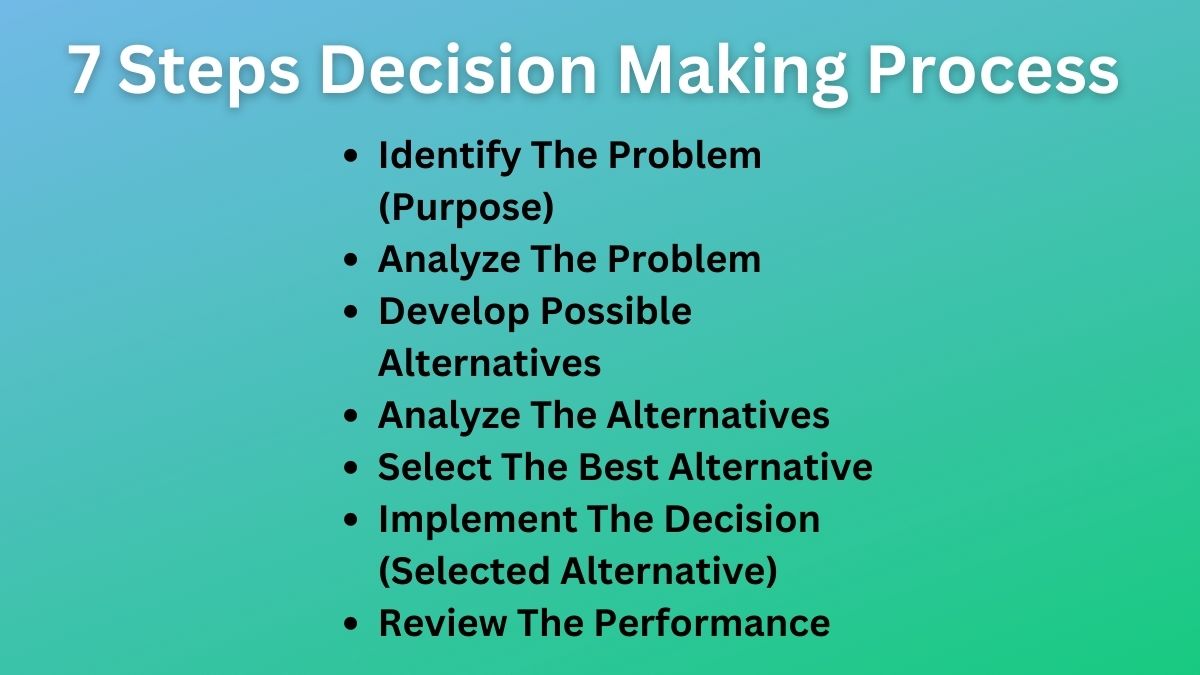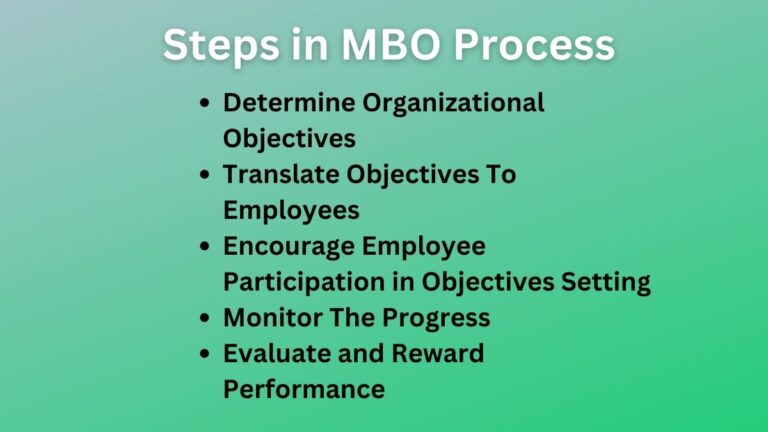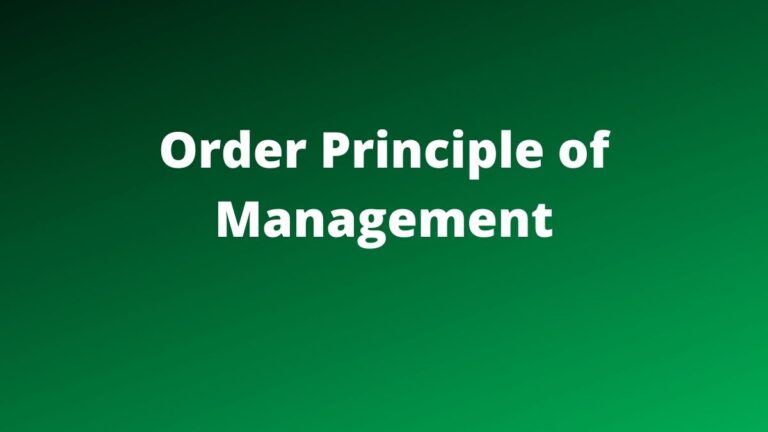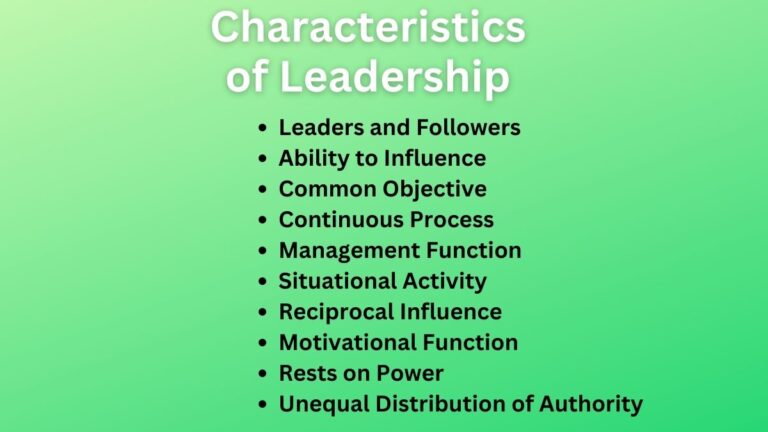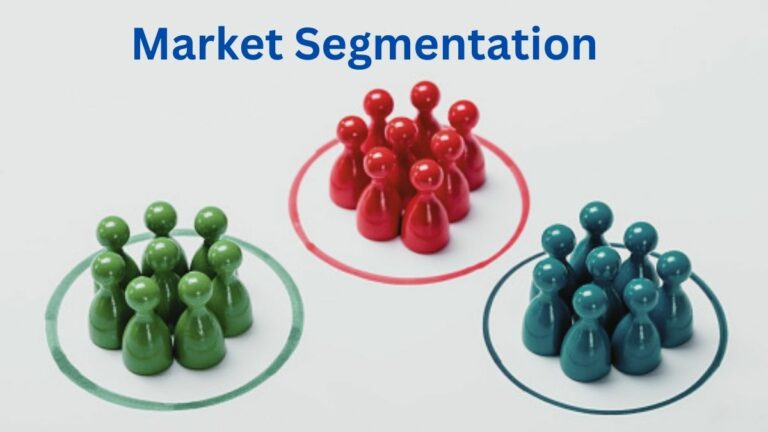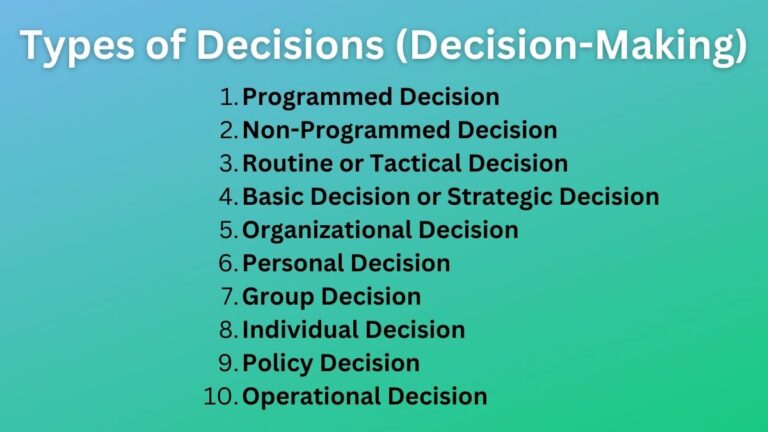What is Decision Making Process? Definition and Steps
When we wake up we make a decision as to whether we wake up and chase our dreams or again sleep and go on the dreams. In our personal life and professional life, we make several decisions in different situations. Let’s discuss how we can make rational decisions in our professional life.
What is Decision Making Process?
Decision-making is the art of choosing the right solution out of many solutions. The Decision-making process is a set series of steps that involves the identification of problems, generating possible solutions, and finally making a choice i.e. making a decision.
Managers usually make business decisions that support the performance of the organization. As our decision decides how our future will be, similarly, decisions taken by managers decide how the future of the organization will be.
Making of rational business decision usually involves the following seven steps. Let’s discuss these steps in detail
Steps in Decision Making Process
The following are the main steps of the decision-making process.
Identify The Problem (Purpose)
The first step of the decision-making process is the identification of the purpose or problem for which the decision will be made. You should identify the problem which is weighing down your firm’s performance.
It is said that identification of the actual problem is equal to the completion of half of the decision-making. Suppose when you know the cause of your sickness you will as soon as possible go to the hospital and take medicine. It will save you time and you will be well soon.
Similarly, when you clearly know the problem the organization is facing you will easily gather the relevant information to come to the right decision. Here, the first step of decision-making ends with problem identification, and analysis of the identified problem begins.
Related: Conditions of Decision Making
Analyze The Problem
Once you identified the problem, in the next step you should analyze the problem in a way that examines the problem’s possible both positive and negative impact on organizational performance. The problem’s short-term and long-term impact on organizational goal achievement should also be analyzed.
After all, in this step, after analyzing the problem you should come to know the actual reason (s) for the problem. And, starts finding the relevant information.
If possible find related data in your organization, if there were similar problems that were resolved properly, will be helpful in solving the recent problems.
Develop Possible Alternatives
Once you have identified the main cause for the problems, in this step, you have to look for different alternative solutions. There may be many ways (alternatives) to solve a problem.
You should try to find as many alternatives as possible because it is important in business decision-making when you have to convince different stakeholders as every stakeholder’s interest differs.
For relevant alternatives, you can read journals, discuss with your employees, discuss with customers, take the opinions of experts, etc. In addition, it is more dependent on your mental ability and logical reasoning to identify alternative solutions.
Analyze The Alternatives
After you identify alternative solutions, the next step in the decision-making process is, you have to analyze all these alternatives carefully.
The main goal of decision-making is to identify the organizational purpose (problem) and assist in goal achievement. You should analyze each of the alternatives keeping in mind how they impact the organizational goal achievement or how they support solving the problem you have identified in step 1.
Analyze the alternatives based on their pros and cons on your goal achievement. In addition, analyze them considering factors such as costs to implement, time to implement, benefits, potential to solve problems, impact on organizational performance, etc.
Make a list of available alternatives and rank them with their pros and cons and contribution to your goal achievement which further help in the selection process.
Related: Styles of Decision Making
Select The Best Alternative
This is the step where you make the actual decision. After careful analysis of alternative solutions, you should select the alternative that has the most potential to solve or achieve the problem (goal) identified in Step 1.
However, while choosing the alternative consider its long-term as well as short-term impact on your organization’s performance. Most importantly you should ask whether or not the chosen alternative brings positive outcomes to you, your teams, or your organizations.
In addition, sometimes the right decision is not the only alternative, the combination of alternatives can also be an effective way to achieve the desired goals.
In the end, select the option that is satisfactory to all stakeholders, brings positive results, and requires fewer implementation costs.
Implement The Decision (Selected Alternative)
The success of made decision lies in its implementation. The goal of decision-making is to ensure the organization’s predetermined goals achievement and it is only possible after its successful implementation.
Implementation of the decision means moving the decision into the practical field. The implementation determines whether or not the alternative will give the expected results.
As the efficiency of the decision-maker is determined by how effectively he implements the decision you should be critical in implementing it. Make timely communication with your teams, employees, and operational authorities. Make them understand what you want and what they are supposed to do.
Give them proper instructions and guidance to complete the task and delegate them the necessary authority based on the responsibilities they hold so they complete in time and effectively.
Review The Performance
Reviewing the performance or result of the implemented decision is the last step in the decision-making process. Once you implement the decision you should not underestimate the importance of reviewing the result.
Reviewing the implemented decision’s performance will let you know how the decision is doing, and whether or not the decision achieving the desired results (which you have identified in step 1).
After reviewing you will know the result, if executed decision works well you can go for another project, and if not you can easily take corrective action in time which will ensure you keep the implemented decision on the right track.
Read Next: Process of Planning
Sajan Kushmi is a content writer with more than 4 years of experience. He holds BIM Degree. He write on the topics related to Management, Marketing, and Entrepreneurship.
